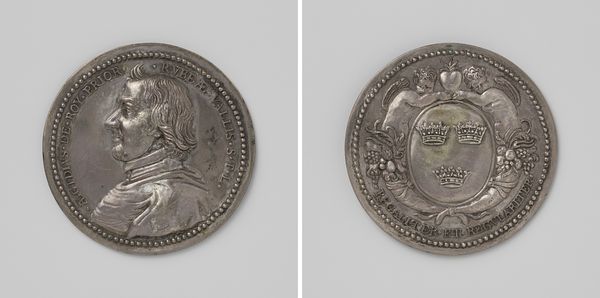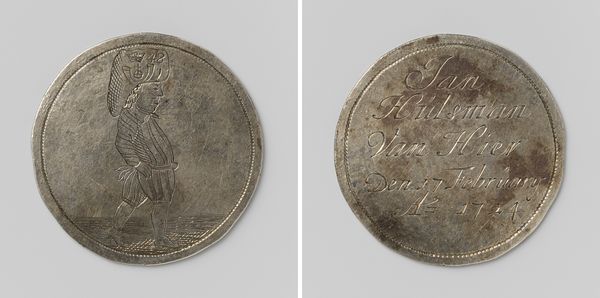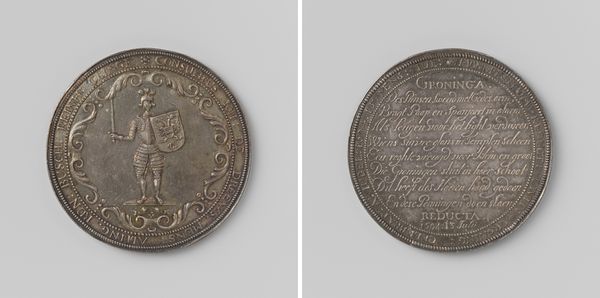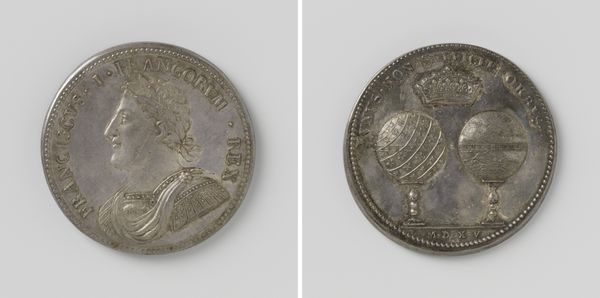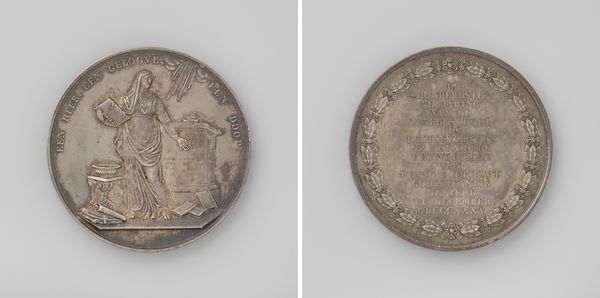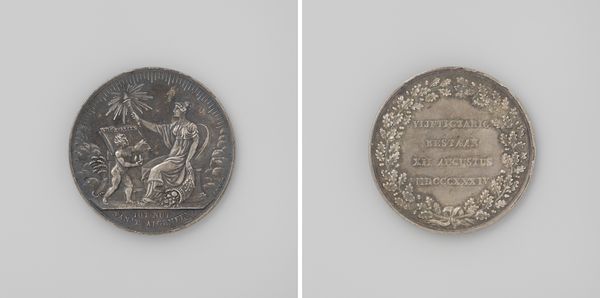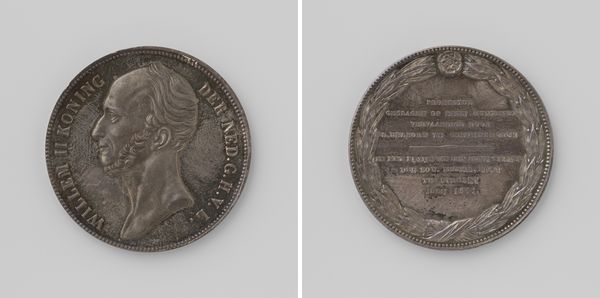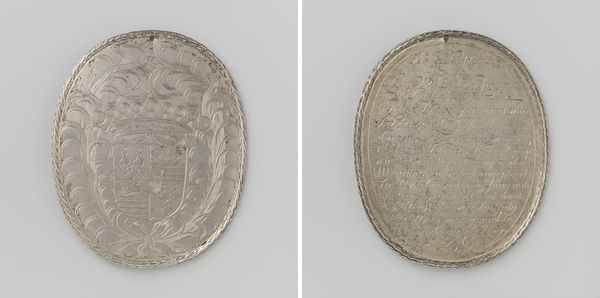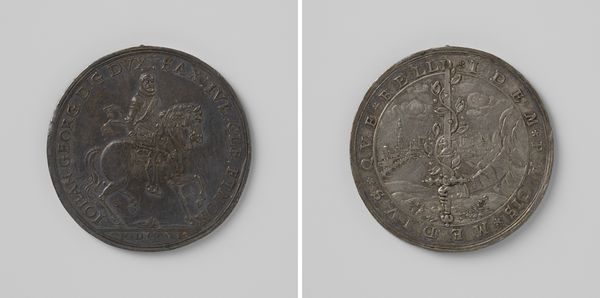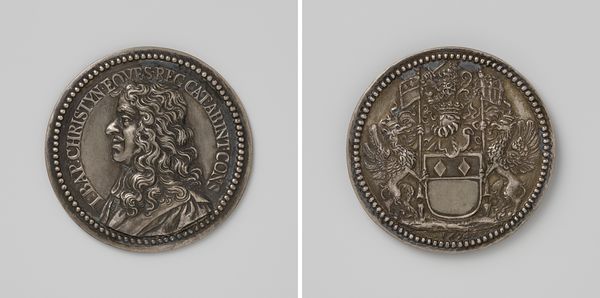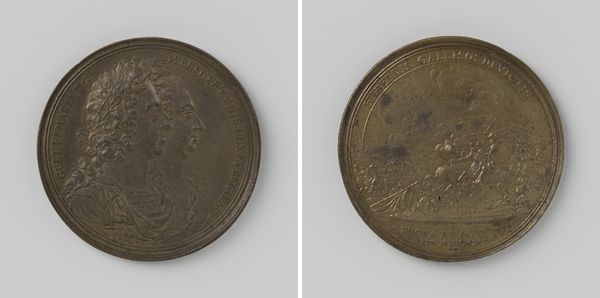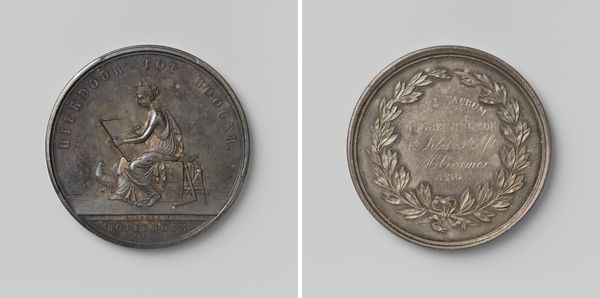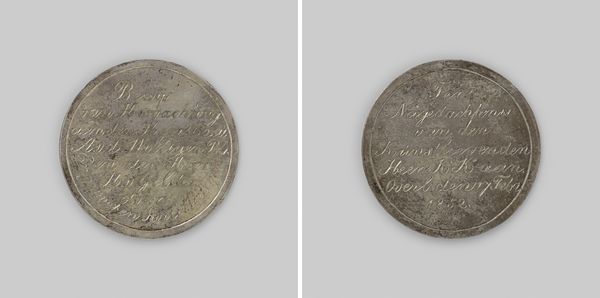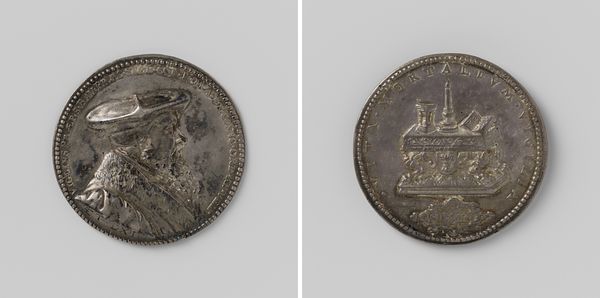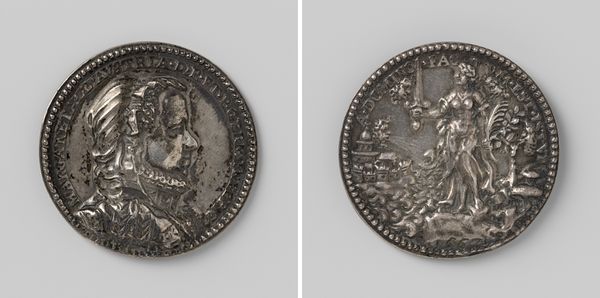
metal, relief, engraving
#
portrait
#
baroque
#
metal
#
relief
#
engraving
Dimensions: diameter 3.3 cm, weight 4.48 gr
Copyright: Rijks Museum: Open Domain
Editor: Here we have an interesting piece: the "Gelegenheidspenning Jacob Tijmes uit Oostzaan," a metal token dated 1747. The engraving shows a small boat with what looks like three stylized eyes on top of the mast. It’s an odd combination of simplicity and Baroque flourish. What do you see in it? Curator: Immediately, I'm drawn to the symbolism of the ship and the "eyes," as you call them. Boats, throughout history, represent journeys – not just physical, but also metaphorical. What do you think the journey being commemorated is? And how do those eyes relate to the narrative? Editor: Maybe it represents a personal voyage? Jacob Tijmes setting off to make his fortune, perhaps? And are the "eyes" some sort of divine guidance, or a symbol of the community watching over him? Curator: Precisely! Consider the context of 18th-century Oostzaan, a Dutch village reliant on maritime trade. The ship becomes more than a vessel; it's a cultural emblem. These eyes could reference vigilance, protection against the dangers of the sea, or even good fortune for successful trade. The continuity of eye symbols across different cultures, even today, reflects that deep-seated need for protection. Editor: That makes me think about how people use amulets today - like wearing a symbol for good luck when traveling. So the token acts as a more permanent amulet? Curator: Exactly! This “Gelegenheidspenning,” then, is not merely decorative. It's loaded with visual metaphors that carry cultural and emotional weight, a lasting reminder of both personal ambition and communal support in the face of the unknown. Does seeing the layers of meaning influence your initial impressions? Editor: Definitely. It makes me think less about Baroque swirls, and more about the journey – about hope, and maybe even anxiety of sailing into the unknown.
Comments
No comments
Be the first to comment and join the conversation on the ultimate creative platform.
